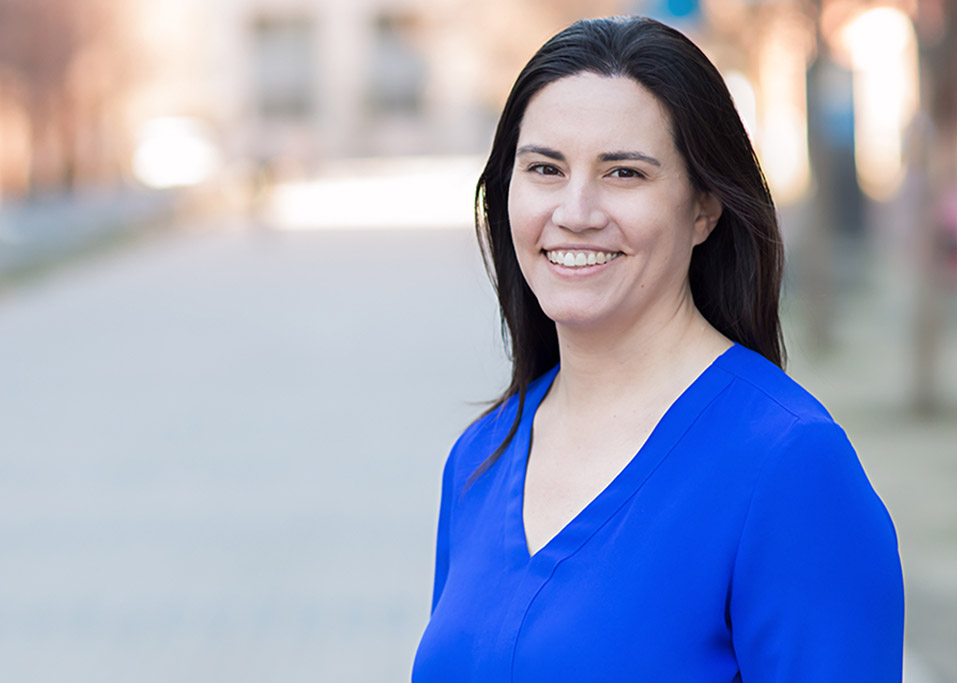Rebuilding Heart Health from Home

Cardiac rehabilitation helps patients develop healthy lifestyle habits after a heart attack or diagnosis of heart disease. This effective, medically supervised program includes exercise, education and emotional support.
In 2019, UCSF cardiologists Donald Grandis, MD, and Anne Thorson, MD, launched the Cardiac Rehabilitation and Wellness Center, serving patients who have had a heart attack, cardiac bypass, valve surgery, heart transplant, or conditions such as peripheral artery disease.
“Unfortunately, fewer than one in four people in the United States who are eligible for cardiac rehab actually attends,” said cardiologist Alexis Beatty, MD, MAS. The program includes up to 36 sessions over 12 weeks. With commute time and traffic, it can be challenging for patients with jobs, caregiving responsibilities, mobility issues or those who live in rural areas to participate.
Dr. Beatty, who recently joined the UCSF faculty with joint appointments in the Department of Epidemiology and Biostatistics and the Division of Cardiology, studies ways to remedy this. She tested mobile apps for cardiac rehabilitation through the Department of Veterans Affairs, then spent a year at Apple working on the Apple Heart Study and Apple Research app. She is now helping the UCSF Cardiac Rehabilitation and Wellness Center to innovate their program.
For years, Dr. Beatty has partnered with colleagues at the American Association of Cardiovascular and Pulmonary Rehabilitation and the Million Hearts Cardiac Rehab Collaborative, sponsored by the Centers for Disease Control and Prevention. They have been pioneering ways to increase participation in cardiac rehab, and published a scientific statement in 2019 about home-based programs that enable patients to participate remotely. However, historically Medicare and private insurers have only paid for in-person programs.
Then COVID-19 hit. “During this public health emergency they’ve been reimbursing for remotely delivered cardiac rehab, and we’re hopeful we can convince them to continue doing so even after the pandemic,” said Dr. Beatty. “At the end of the day, it’s still cardiac rehab. People are exercising, doing motivational counseling, and demonstrating improvements that will help their long-term cardiovascular health.”
Customizing a Path to Health
The home-based program includes all the same components of the in-person version, starting with an individualized patient assessment and treatment plan via phone or video visit. Participants work with exercise physiologists to develop a workout routine, which can include walking in their neighborhood, doing strength training using water bottles, canned goods or a cast iron frying pan if they lack fancy exercise equipment, and working out to Jane Fonda or YouTube Zumba videos. “Staff and patients have been really creative with making do with what they have,” said Dr. Beatty.
Participants also meet virtually with a dietitian and receive medication counseling from a pharmacist. Those with anxiety, depression or other mental health issues can talk with a psychiatrist. In weekly group Zoom sessions, participants provide peer support, learn about preventing heart disease, and cultivate stress management tools such as mindfulness.
Patients may use mobile apps such as Better Hearts to log their daily blood pressure, weight and exercise, and Tiatros, a mental health app. “We’re interested in exploring other technologies, whether it’s wearables or other apps,” said Dr. Beatty. However, one challenge is that some patients lack internet access or digital devices. “If we had unlimited resources, I’d supply tablets with internet connections to patients who needed them, so everyone could participate,” she said.
Currently, about half of UCSF cardiac rehab patients take part in person, and the other half remotely. UCSF also offers a hybrid model, where patients start off with in-person sessions, then complete the program virtually. “We plan to keep having home and hybrid options available after the pandemic ends,” said Dr. Beatty. “One key message is that remote cardiac rehab is good for many people, but it’s not for everyone. Some people need staff directly watching them exercise to be successful. It’s important to find the right approach for each patient.”
